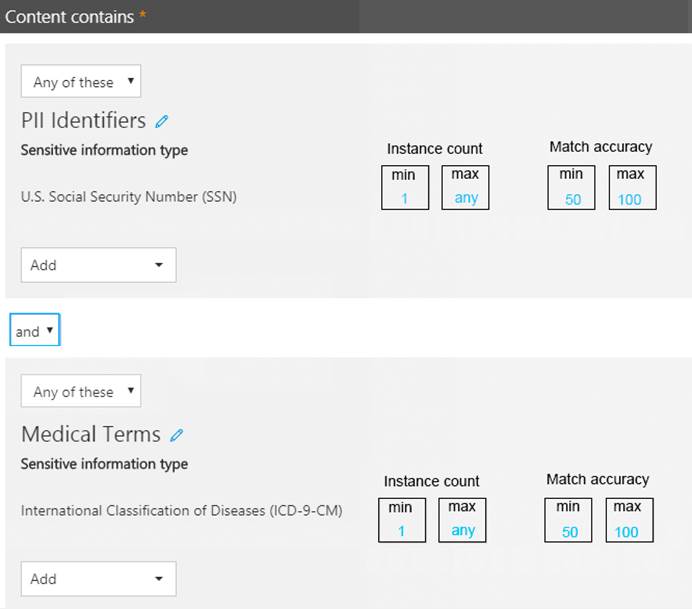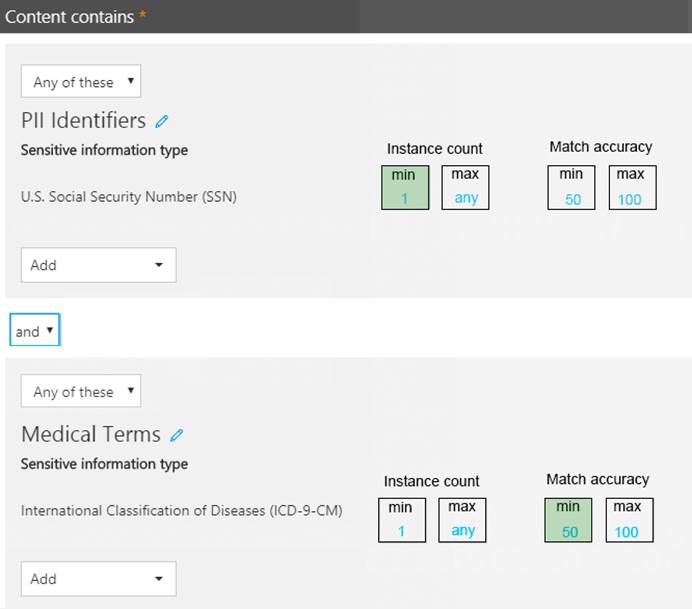HOTSPOT
You have a data loss prevention (DLP) policy.
You need to increase the likelihood that the DLP policy will apply to data that contains medical terms from the International Classification of Diseases (ICD-9-CM). The solution must minimize the number of false
positives.
Which two settings should you modify? To answer, select the appropriate settings in the answer area. NOTE: Each correct selection is worth one point.

Answer: 
Explanation:
You can tune your rules by adjusting the instance count and match accuracy to make it harder or easier for content to match the rules. Each sensitive information type used in a rule has both an instance count and match accuracy.
To make the rule easier to match, decrease the min count and/or increase the max count. You can also set max to any by deleting the numerical value.
To minimize the number of false positives, we need to increase the minimum match accuracy.
A sensitive information type is defined and detected by using a combination of different types of evidence. Commonly, a sensitive information type is defined by multiple such combinations, called patterns. A pattern that requires less evidence has a lower match accuracy (or confidence level), while a pattern that requires more evidence has a higher match accuracy (or confidence level).
Reference:
https://docs.microsoft.com/en-us/office365/securitycompliance/data-loss-prevention-policies
https://docs.microsoft.com/en-us/office365/securitycompliance/what-the-sensitive-information-types-look-for#international-classification-of-diseases-icd-9-cm